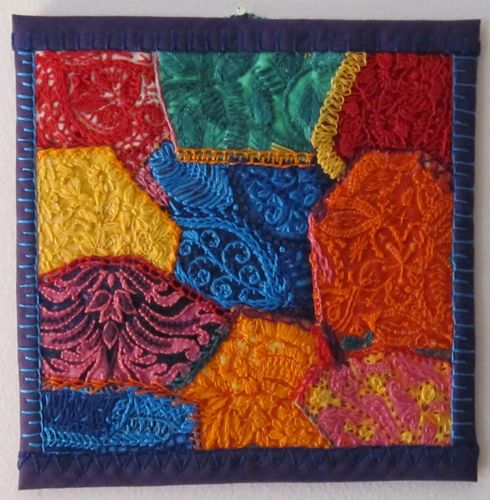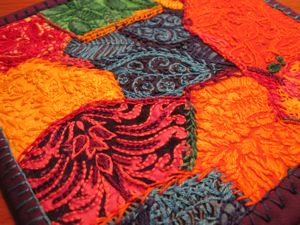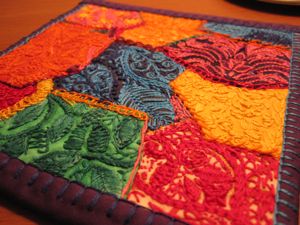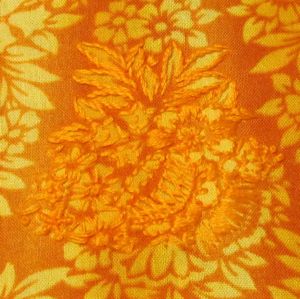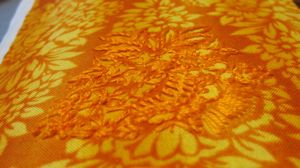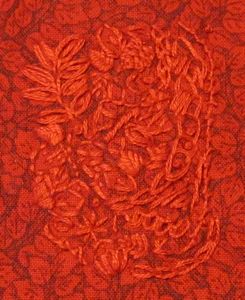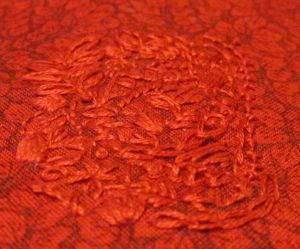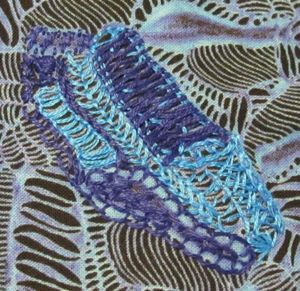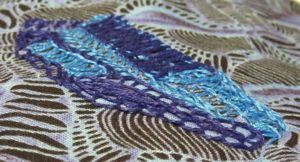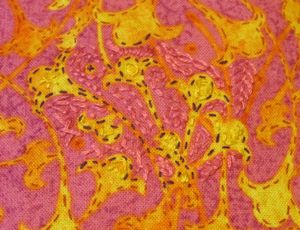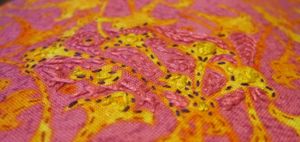I was really hoping to show you a monster today, but there were technical difficulties. So here are some emergency pumpkins.
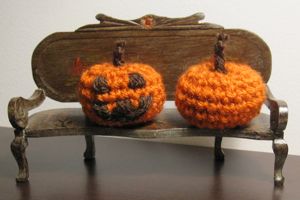
And here’s the pattern! (conventions and abbreviations here)
1. Form magic ring, ch 1, and sc 5 in ring. Tighten.
2. Sc, *2sc, sc* twice (7 sc). Finish off beginning yarn end.
3. 2sc around (14 sc).
4. *2sc, sc* around (21 sc).
5-8. Sc around (4 rnds).
9. *Dec, sc* around (14 sc).
10. Dec around (7 sc). Stuff!
11. Sc, *dec, sc* twice (5 sc).
Use the perfect finish and thread the yarn through the middle of the pumpkin and out through the magic ring before you tighten; stitch back and forth between rounds 1 and 11 to pull the middle of the pumpkin top and bottom together. FO.
Add a stem or a face as desired. I threaded two pieces of brown yarn into the top of the pumpkin, crosswise, and interleaved square knots (right over left for each pair followed by left over right for each, etc) and then made an overhand knot to finish off.
Happy Halloween!
